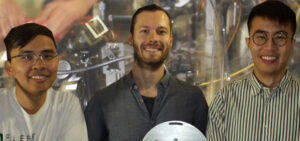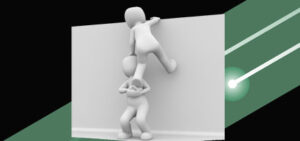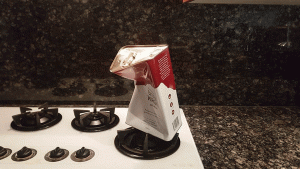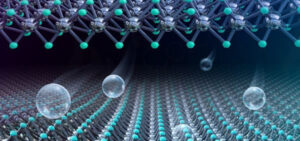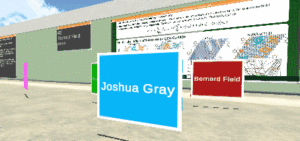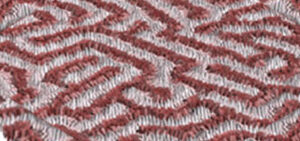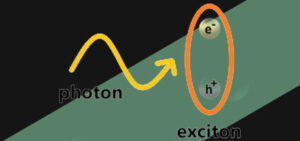Engage
See news from around FLEET, below
Catch up on all past issues of FLEET News newsletter
FLEET News
In the absence of in-house lab tours to introduce school students to working labs and researchers, in 2020 FLEET developed and distributed a series of ‘virtual lab tours’, of varying levels of interactivity: Show-and-tell lab tour via webcam for John Monash Science School (JMSS) students at Clayton of FLEET laboratories at UNSW in Sydney (materials science), and Swinburne University in …
Why would we need a special day to celebrate women in science? February 11th marks the International Day of Women and Girls in Science, promoted by the United Nations. According to the UN, less than 30% of the researchers worldwide are women. This means that there’s twice as many men as there are women! In fields like Mathematics, Physics and …
An international team of scientists has invented the equivalent of body armour for extremely fragile quantum systems, which will make them robust enough to be used as the basis for a new generation of low-energy electronics. The scientists applied the armour by gently squashing droplets of liquid metal gallium onto the materials, coating them with gallium oxide. Protection is crucial …
FLEET provides mentoring to personnel across all career stages (such as PhD students and early- and mid-career researchers) covering areas such as induction, career advancement and planning, equity and diversity, professional development, entrepreneurship and research leadership skills. Two mentoring models are offered: Individual, goal-oriented mentoring, where members are individually matched to a mentor within FLEET based on their needs, for …
While FLEET’s face-to-face outreach efforts were necessarily limited in 2020, the Centre innovated new ways to keep our members involved in science outreach. Several FLEET members took advantage of lockdown to generate homescience experiments at home, with a seeming bias towards experiments that involved blowing something up or setting something on fire. (An insight into lockdown frustration perhaps, or just …
Encasing fragile 2D materials in ultrathin gallium-oxide glass could allow integration into functional low-energy devices Two-dimensional (2D) semiconductors have emerged during the past decade as extremely promising for future electronic and optoelectronic devices. However, to unlock the significant potential of these fragile materials, we must first find a way to protect them in functional devices, while maintaining their key electronic …
A new type of ultra-efficient, nano-thin material could advance self-powered electronics, wearable technologies and even deliver pacemakers powered by heart beats. The flexible and printable piezoelectric material, which can convert mechanical pressure into electrical energy, has been developed by an Australian research team led by RMIT. It is 100,000 times thinner than a human hair and 800% more efficient than …
“Stripy zebra, spotty leopard, …”. Kids never become bored pinpointing animals based on their unique body patterns. While it is fascinating that living creatures develop distinct patterns on their skin, what may be even more mysterious is their striking similarity to the skin of frozen liquid metals. Pattern formation is a classic example of one of nature’s wonders that scientists …
Important step towards fault-tolerant quantum computing Why is studying spin properties of one-dimensional quantum nanowires important? Quantum nanowires–which have length but no width or height–provide a unique environment for the formation and detection of a quasiparticle known as a Majorana zero mode. A new UNSW-led study overcomes previous difficulty detecting the Majorana zero mode, and produces a significant improvement in …
With strict Covid-19 restrictions across much of FLEET’s Australian nodes, and eliminating international visitors, the decision was made to hold the Centre’s 2020 annual workshop entirely online. By this time, Centre decision-makers were well aware of ‘Zoom fatigue’. People spending many hours on Zoom each week were finding interacting only via computer screen to be dis-engaging, and surprisingly exhausting. In …
Topological transistors added to IEEE International Roadmap for Devices and Systems The remarkable advances in semiconductor technology (guided by the so-called ‘Moore’s Law’ over some six or seven decades) don’t just happen. They are steered through an international, pre-competitive industry roadmap. The IEEE International Roadmap for Devices and Systems ‘IRDS’ is the latest semiconductor roadmap, guiding development of more conventional …
FLEET turbo-charged our existing Centre-wide seminar series in 2020, with 10 research seminars – a significant increase from only four seminars in 2019. Very aware of the importance of Centre cohesion without inter-state travel and with many universities in lockdown, FLEET threw extra resources into monthly Zoom seminars, often overlapping with expanded ‘journal club’ meetings involving multiple interstate visitors. Two …
In January 2020 FLEET brought the 10th International Conference on Spontaneous Coherence in Excitonic Systems (ICSCE10) to Australia for the first time. Continuing this 15-year tradition from the global scientific community interested in various quantum phenomena, ICSCE10 was hosted at the Arts Centre Melbourne amidst smoke storms resulting from one of the worst bushfire seasons in Australia’s history. ICSCE10 brought …
Why do some ferroelectric materials display bubble-shaped patterning, while others display complex, labyrinthine patterns? A FLEET study finds the answer to the changing patterns in ferroelectric films lies in non-equilibrium dynamics, with topological defects driving subsequent evolution. Ferroelectric materials can be considered an electrical analogy to ferromagnetic materials, with their permanent electric polarisation resembling the north and south poles of …
Enhanced interactions through strong light-matter coupling Why do two-dimensional exciton-polaritons interact? The intriguing quasiparticle the exciton-polariton is part light (photon), and part matter (exciton). Their excitonic (matter) part confers them the ability to interact with other particles —a property lacking to bare photons. In theory, when confined to only two dimensions, very slow (ie, very cold) excitons should cease any …



